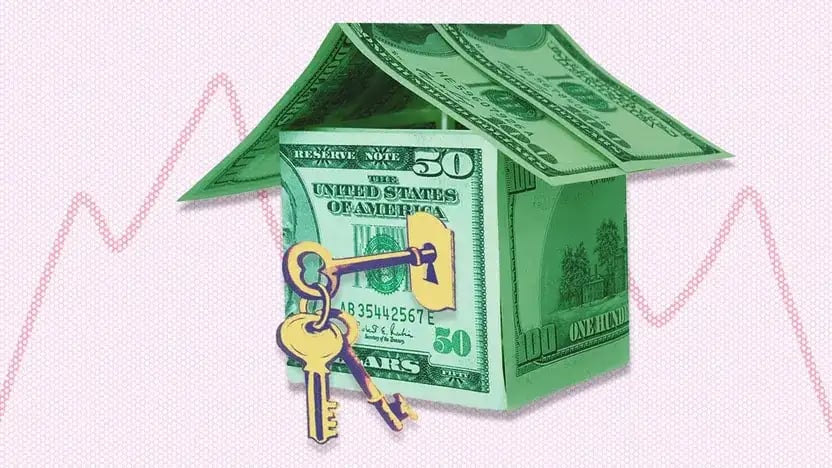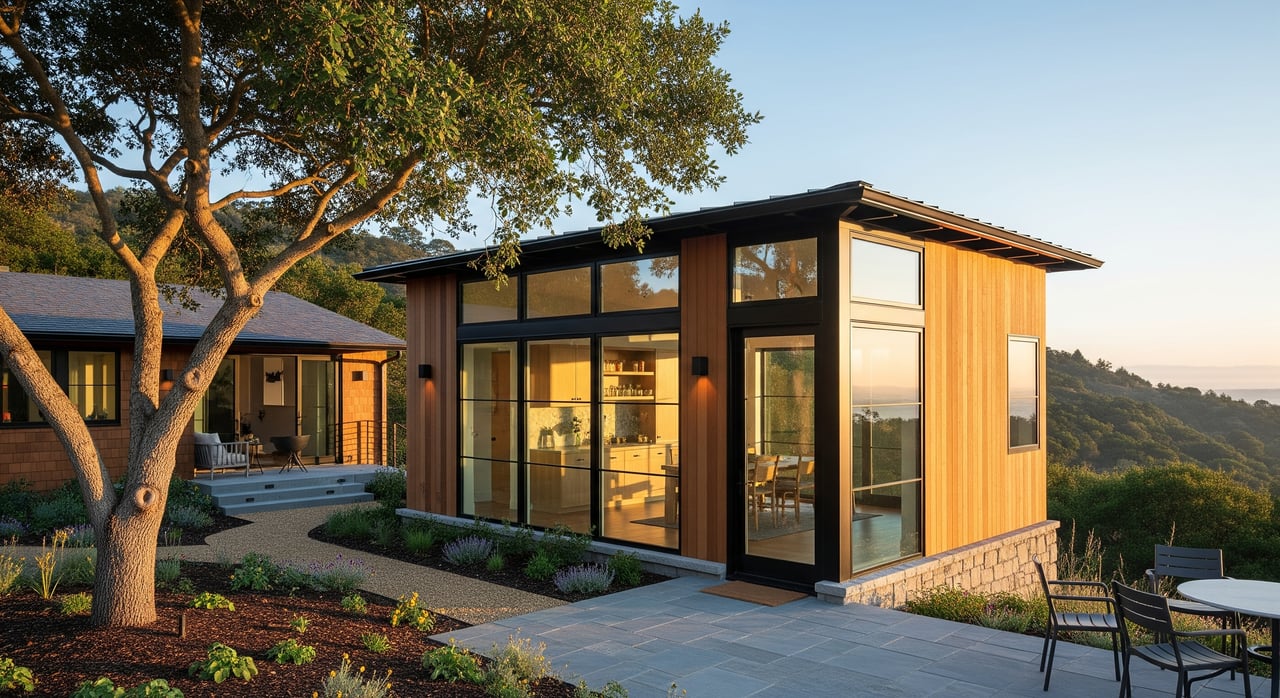Down Payments Are Dropping From Historic Highs—See How Much Homebuyers Can Save Today
Realtor October 24, 2024
Buyer

Realtor October 24, 2024
Buyer

Homebuyers might be relieved to hear that down payments are finally dropping from recent historic highs.
A new report by Realtor.com® shows that the median down payment homebuyers plunked down from July to September of 2024 was an average of 14.5%—or $30,300.
That’s a $2,400 savings from last quarter’s historic peak of $32,700 (14.9%).
So why are down payments dropping? Fewer homebuyers are out there, which gives those who do brave today’s market more leverage, according to Realtor.com senior economic research analyst Hannah Jones.
“The annual decline in down payments is the result of less buyer competition in the third quarter,” Jones says. “Easing demand and increasing inventory gave buyers more flexibility last quarter, which led to slightly lower down payments.”
To produce these findings, the Realtor.com economic research team examined down payment trends throughout the U.S., individual states, and the top 150 metropolitan areas up to the third quarter of 2024, using data from Optimal Blue. The team then determined the down payment as a percentage of the sale price by averaging the data.
Down payment dollar amounts fell in 21 states in the third quarter of 2024.
The states that saw the biggest down payment declines include COVID-19 pandemic-era hot spots such as Texas and Florida.
These states “have seen significant softening over the last year as waning demand and climbing inventory impact home prices and reduce competition,” says Jones.
The five states with the biggest down payment declines were Florida, down 24% year over year, to $27,000; Texas, down 23.2%, to $14,400; Wyoming, down 22.3%, to $25,200; the District of Columbia, down 17.7%, to $81,300; and South Dakota, down 16.4%, to $31,400.
“Overall, the metros with the smallest down payments tend to be relatively affordable and flush with inventory,” says Jones.
Housing stock was between 19% and 37% more abundant in these metros compared with one year ago, and homes were spending more time on the market.
The median list price in each of these markets was more than $30,000 below the national median, enabling lower down payments, according to Jones.
The top two markets with the smallest down payments are San Antonio, TX, and Virginia Beach,VA, which are both military markets. In markets with a high military population, buyers are more likely to use a VA loan, which can allow for as little as a $0 down payment.
In San Antonio, the average down payment in the third quarter of 2024 was $5,200, or 7.4%. That’s down $900 year over year.
The average down payment in Virginia Beach was 9.1%, or $7,300—which is actually $600 higher than the same time last year.
Rounding out the top five metros with lowest down payments were Memphis, TN, with an average down payment of $8,300 (down 9.8%, or $2,500, year over year); New Orleans, with an average down payment of $13,500 (up 11.2%, or $3,000, year over year); and Houston, with an average down payment of $17,500 (down 11.8%, or $2,000, year over year).
The top five states with the largest annual down payment increases were all in the Northeast and Midwest.
“Northeast and Midwest markets have been heavily represented in recent Hottest Housing Market reports, confirming that buyer demand is driving competition and prices higher, resulting in higher down payments,” says Jones.
In dollar amounts, Rhode Island saw the largest spike in down payment, with the typical down payment going from $45,300 to $60,400 year over year—an increase of $15,000 (33.8%).
In Delaware, the typical down payment went from $40,400 to $53,600—which was an increase of $13,200 (32.8%).
Wisconsin‘s typical down payment went from $28,300 to $35,500—which was an increase of $7,200 (25.2%).
In Nevada, the typical down payment went from $33,300 to $40,900—which was an increase of $7,600 (22.8%).
Finally, Ohio‘s typical down payment went from $15,100 to $18,500—an increase of $3,400 (22.8%).
Four out of five metros with the highest down payment amounts are in California, which includes some of the most expensive housing markets in the country.
“These pricey metros tend to see large down payments as both interest rates and interest payments increase with larger loan amounts, incentivizing buyers to put down as much as possible to avoid these costs,” says Jones.
San Jose, CA, continues to be the metro with the largest median down payment, with the average homebuyer putting down about $312,000, or 27.7% of the purchase price. That’s nearly a $76,000 increase from the same quarter last year—when buyers put 24.8% down.
In August, the median price of a single-family home in San Jose exceeded $2 million, marking the first instance that a city has reached such a milestone since the National Association of Realtors® began tracking this data in 1979.
The other California metros in the top five were San Francisco, at No. 2; Sacramento, at No. 3; and Los Angeles, at No. 5.
In San Francisco, buyers put down an average of $231,400 on a house, or 25%. That’s $28,900 more than the same time last year.
Homebuyers put down an average of $109,000, or 21.0%, in Sacramento. That’s a difference of $5,200 year over year.
In Los Angeles, buyers put down an average of 20.9%, or $159,700. That’s $7,400 higher than the third quarter of last year.
Boston, at No. 4, stands out on this list of high-priced California markets. Buyers in Beantown put 20.9%, or $109,000, down on average—which was $2,000 more than last year.
“These high-priced locales tend to have wealthier, high-earning residents who have the funds to put more down on a home,” says Jones.
Although down payments have started to trend lower, they remain historically high.
“With many buyers opting out of the home purchase market altogether, those left are likely better positioned to make a larger down payment, and incentivized to do so by high mortgage rates,” says Jones.
As mortgage rates ease, more buyers will likely enter the market, and the incentive to minimize their home loan will soften.
“However, if for-sale inventory fails to keep up with increased buyer demand, down payments could climb once again,” says Jones.
Stay up to date on the latest real estate trends.

Seller
December 19, 2025
The housing market hasn’t felt this energized in a long time – and the numbers backing that up are hard to ignore.

Buyer
December 18, 2025
You may not want to put your homebuying plans into hibernation mode this winter.

December 18, 2025

Buyer
December 16, 2025
One of the biggest homebuying advantages you can give yourself today is surprisingly simple: a flexible wish list.

Seller
December 12, 2025
A lot of people are asking the same thing right now: “Is it even a good time to sell?” And the truth may come as a bit of a surprise...

Seller
December 11, 2025
Spring gets all the attention, but it’s not always the best time to sell a house.
We Guide Homeowners through the complicated process of selling their home using our 4 Phase Selling Process and 3 Prong Marketing Strategy that alleviates their stress and moves them effortlessly to their next destination. Schedule a 15 Minute Complimentary Strategy Session Today